Mongolia #5 – Olgii’s Golden Eagle Festival – Day 2 – October 2014
It was 23°F outside under a blazing blue sky as the second day of the 16th Annual Golden Eagle Festival began. Different from the previous day’s event where eagles had to attack a dead rabbit or fox being drug behind their trainer’s horse, today they had to zero in on their owner who held a chunk of meat in his gloved hand while riding at full speed across the field. Sharp talons extended, as soon as the eagle had landed on the glove, breakfast was served. This too was all timed by officials and the Kazakh hunters would race by the judging stand with his eagle enjoying the ride with wings open in an impressive display of the close relationship of man, horse and bird.
Hunters demonstrating their Skills
While the next competition was being organized, we wandered around the gers (yurts) where beautiful “tus kis”, (hand-embroidered tapestries), used to decorate the ger walls and other souvenirs were for sale. Several locals had set up grills to cook “shashlik”, skewers of mutton and fat sprinkled with their own special spices, served with raw sliced onions and bread.
Among the local Kazakh Mongolians, there were several archery contests. In one competition, instead of pointed arrows, they used blunt tips and the goal was to hit small leather balls that had been lined up about 30 yards away. It looked like billiards with a Mongolian twist. Their accuracy was impressive.
Bloody Knuckles in Tug-a-War
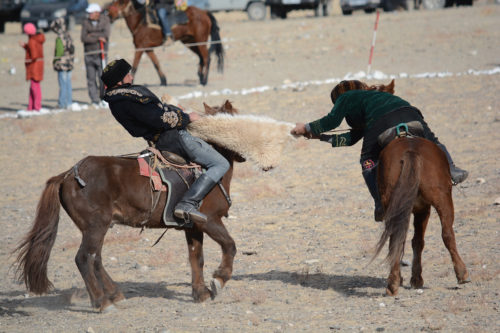
It was a fierce battle to the end until one of the riders ended up with the sheep carcass in his lap.
Meanwhile, the camel race was being staged. It was not as action-packed as we might have imagined, since the ungainly bactrians are not really into galloping across the stony desert. They were encouraged on by men on horseback riding along side with whips.
Archery Competition
Back in the main arena, the final competition for the eagle hunters was getting under way. A sheep carcass was tossed on the ground and the riders, two at a time, would pick it up and get a firm grip for an exciting tug-a-war that could last several minutes until one of the riders succeeded in wrestling the bloody carcass away from the other. The horses played a critical role in the battle and the skill of the riders was amazing as they kept their grip on the carcass and used the power of their stocky Mongolian horses to the best advantage. Competition was fierce and we spotted quite a few who were nursing their bleeding knuckles. Apparently there were some rules because there was an umpire watching the battle.
Ashol-Pan breaks the Male Tradition
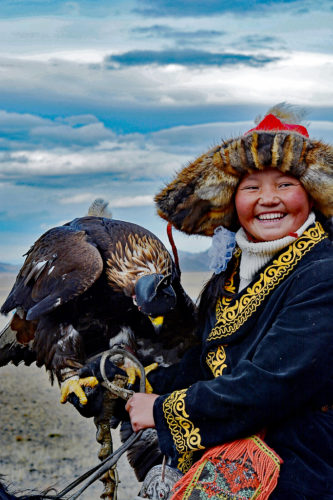
The big sensation was 13 year old Ashol-Pan, the first female to become an eagle hunter, or is it huntress?
In past years, the winner of the eagle contest was allowed to send his eagle after a live fox or a small wolf pup as a final demonstration of the eagle’s skill for the crowd. The fox this year died or was killed, so a wolf pup was to be used. However, there were so many sympathetic foreign spectators that someone purchased the poor wolf to spare its life. How it will manage in the wild of the coming winter in the mountains full of other hungry eagles is a good question. As cruel as some may think it is to hunt cute little foxes or wolves or rabbits and other small animals with an eagle instead of a rifle, we meat-eaters regularly kill deer, moose, elk for sport, and slaughter cows or cute baby lambs to eat. Eagle hunting has been a tradition in this part of the world for over 2,000 years.
Hand-embroidered Tus Kis were tempting
Nothing goes to waste. In these deserts and high mountains, natives eat basically only meat just like the hunter/gatherers in Paleolithic times. Gathering winter pelts is part of the hunter/herder’s livelihood and still provides the warm clothing for the severe winters. Some of their beautiful coats were a testimony to their hunting success.
It made us feel better to learn that when the trained eagle has reached the age of about 10 years, she is taken to a mountain top, presented with a dead sheep as a going-away present and released to the wild to once again live a life of freedom and to breed.
The comical Camel Race
All in all, a very exciting two days of a spectacle we could probably not see anywhere else in the world. Now it was time to make a new plan. As much as we would have liked to drive back to Ulaanbaatar, taking our time to visit some of the remote families herding their sheep, yaks, cows, horses, camels and goats along the way, and then heading for the Central Gobi desert to celebrate Monika’s birthday, The Turtle V needed some repairs on the rear suspension and a full check-up after its grueling 900-mile crossing of the Altai Gobi. The first step was to wash off the mud and dust. Clean trucks run better. An email to Hellwig Products in Visalia, CA, set our rescue mission for replacement parts in motion. We get emergency product support from all of our sponsors and Hellwig was a great example. A new bracket and bolts were in the express mail the next day.
- The remote town of Olgii was possibly even closer to “the middle of nowhere” than the Russian town of Kosh Agach across the border.
- The competition field was a just a short drive from Olgii.
- With her protective hood removed, at the call from her trainer she would be released from the hill top above the competition field.
- After the eagle’s hood had been removed on top of the nearby hill, the bird was waiting for her master’s call to catch the prey.
- Diving at speed over 150 miles per hour, the Golden Eagle breaks at the last moment and with sharp talons extended, she lands on the outstretched arm of her trainer who is galloping at full speed across the playing field.
- As a wonderful display of the intimate relationship between man, eagle and horse, the competitors then race at top speed past the judges’ stand with their eagle enjoying the ride with wings fully extended.
- As soon as she lands on her trainer’s heavy glove, the judges click their watches and a treat is provided to the eagle for her successful landing.
- During all this excitement, there were ongoing archery contests.
- Instead of pointed arrows, they used blunt tips and the goal was to hit small leather balls that had been lined up about 30 yards away.
- It looked like billiards with a Mongolian twist. Their accuracy was impressive.
- Judges kept careful score of the archers.
- During a break there was a short procession showing of the beautiful traditional costumes.
- This couple won the “best of show”.
- Their individual costumes as well as their saddles and tackle were all being judged.
- We are guessing that this may have been the queen of this year’s event.
- Throughout the two-day competition, this young 13-year old girl named Ashol-Pan captured the photographers’ eyes. She was one of youngest and the only female Golden Eagle huntress in the competition. She was very serious about it and obviously enjoying the attention.
- In past years, the winner of the Golden Eagle contest was allowed to send his eagle after a live fox or a small wolf pup as a final demonstration of the eagle’s skill for the crowd. The foreign tourists felt so sorry for this baby wolf that someone bought it to save its life. We wondered how it will manage in the wilderness full of hungry eagles during the winter.
- Some of the men wore beautiful fox, rabbit or wolf skin coats, a testimony to their and their eagle’s skill in hunting.
- Camels big flat feet seemed better designed for soft sand than the rocky terrain like this part of the Gobi desert mountains.
- The camels we saw in this part of Mongolia were beautiful animals, but they definitely have a personality of their own. If you get too close they will spit at you.
- The camels didn’t seem too enthused to have to race across the desert.
- A sheep carcass was tossed on the ground and the riders, two at a time, would pick it up and get a firm grip for an exciting tug-a-war that could last several minutes until one of the riders succeeded in wrestling the bloody carcass away from the other.
- The horses played a critical role in the battle and the skill of the riders was amazing as they kept their grip on the carcass and used the power of their stocky Mongolian horses to the best advantage.
- Apparently there were some rules because there was an umpire watching the battle. These riders were seriously competitive.
- After close inspection, it was interesting to notice that none of these Mongolian ponies had horseshoes of any kind.
- The final lineup of the two day competitions was an impressive display of horses, men and their Golden Eagles.
- We wondered what these fierce birds were thinking. How much loyalty did they feel for their trainers who had raised them from baby eaglets.
- The hunters had special braces or crutches attached to the saddle horn that they could rest their arm on while carrying their heavy eagles.
- The hand stitched bridles for their horses were beautifully decorated.
- Not exactly a typical western saddle. I recall going for a short ride back in 1996 in another part of Mongolia using a saddle like these. I can tell you it might change your voice after a long ride.
- Heavy duty steel strips were obviously made to fit the big boots commonly worn by these men.
- These were very common work boots worn by most men.
- Maybe not the everyday hat, but we did see several of this style throughout the competition.
- This older gentleman was having a great time. He even decided to do a little dance with his eagle on his shoulder. Everyone laughed and applauded.
- Beautiful “tus kis”, (hand-embroidered tapestries) used to decorate the ger walls were for sale.
- Other vendors were selling smaller woven items like glass cases, little bags, purses, and small hot pads. In retrospect we wish we had purchased a few.
- It looked like these children were busy picking out bags of candy and junk food which they never had in their villages.
- On a cold morning in Mongolia there’s nothing like a couple of hot “shashlik” skewers of grilled lamb or mutton with fresh onion and a chunk of bread.
- A tourist with his 800 mm telephoto. An event like this where we were only a few feet from the action, my Nikon 55-300mm lens was more than enough.
- Children are always fun to watch. There were horse and camel rides and family photo ops.
- Not being an ornithologist, I could not tell if this was a hawk or maybe a young eagle being trained by this young boy for a future hunting career.
- The Golden Eagle is one of the largest, fastest, nimblest raptors in the world. Lustrous gold feathers gleam on the back of its head and neck; a powerful beak and talons advertise its hunting prowess. The Golden Eagle has long inspired both reverence and fear.
- The Turtle V would not fit in this carwash with its rear top storage box, so we washed the front and then turned around to do the rear. A clean truck always runs better. Repair parts from Hellwig were on the way to Ulaanbaatar.



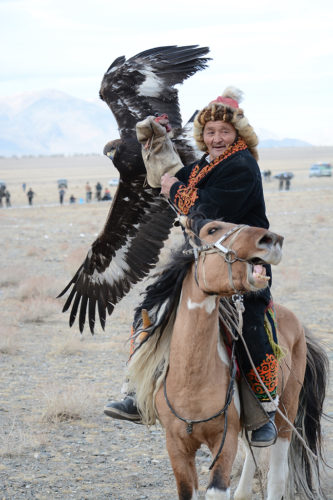
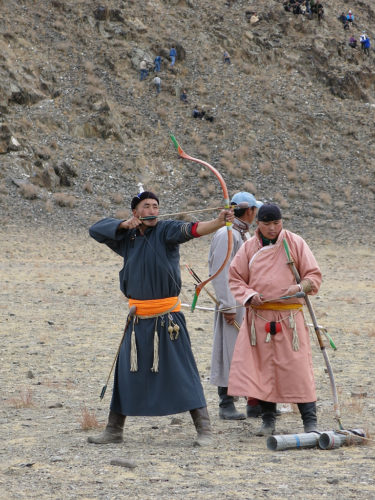
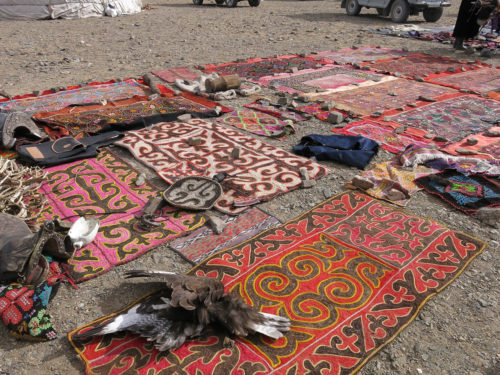
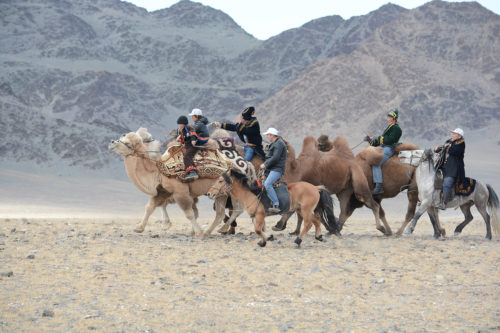
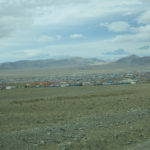
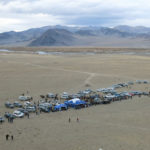
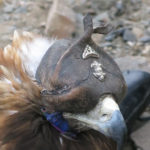
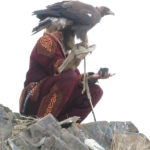
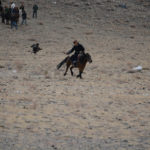
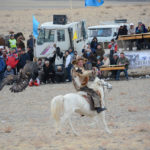
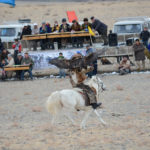
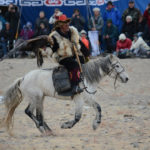
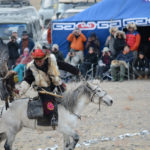
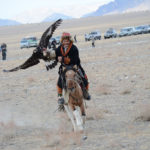
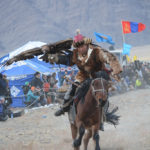
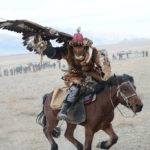
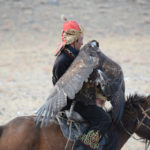
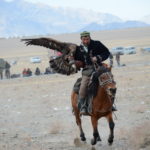
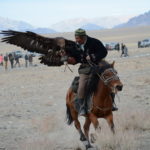
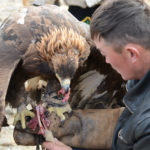
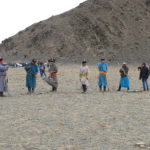
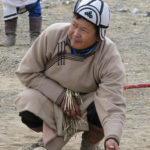

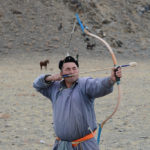
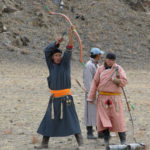
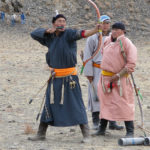
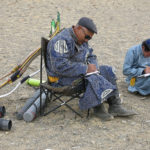
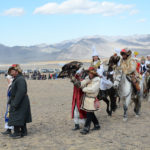
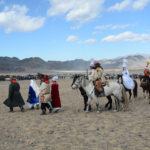
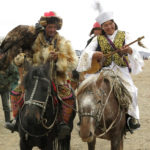
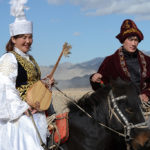
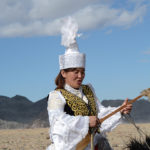
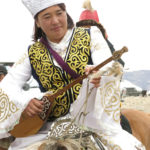
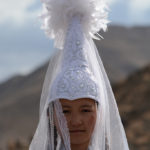
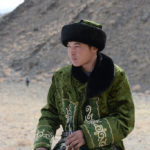
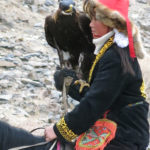
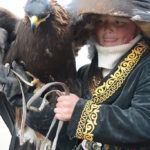
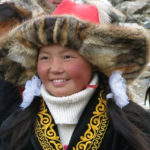
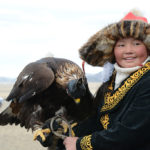
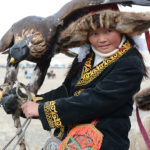
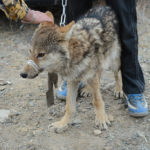
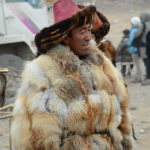
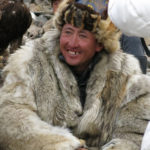
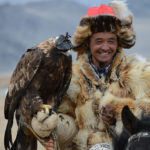
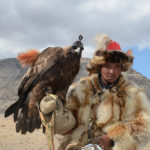
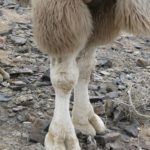
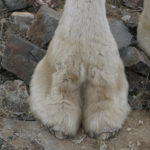
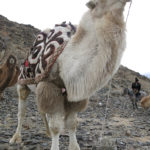
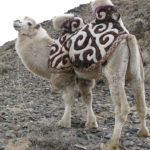
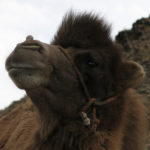
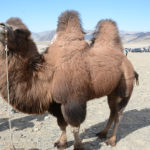
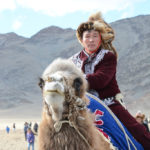
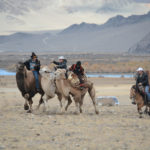
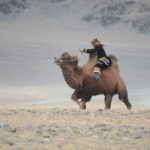
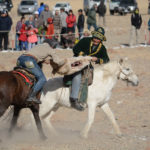
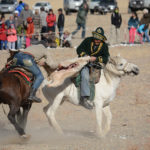
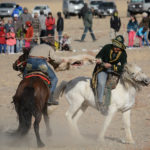
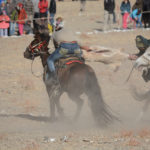
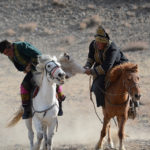
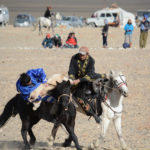
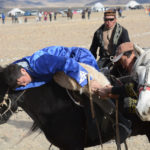
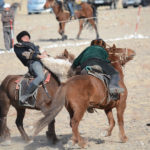
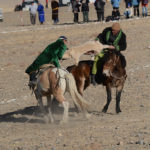
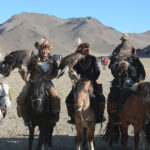
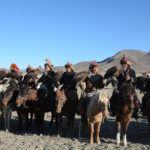
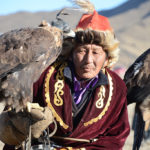
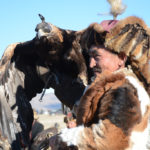
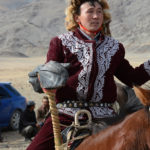
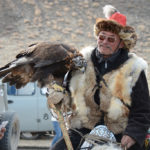
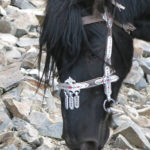
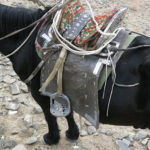
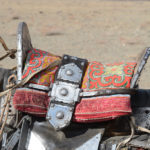
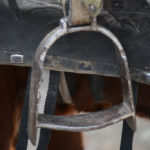
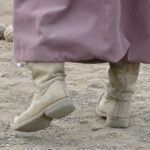
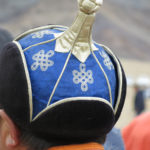
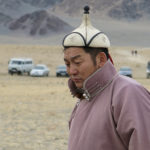
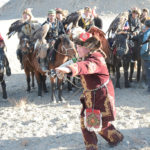
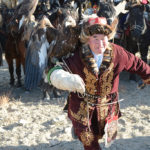
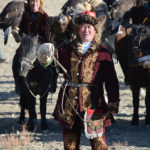
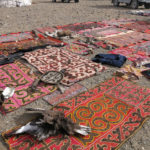
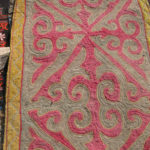
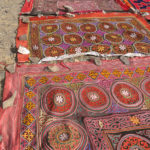
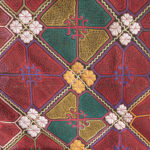
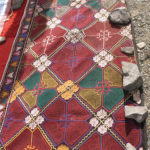
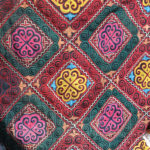
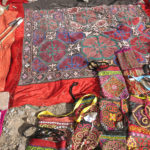
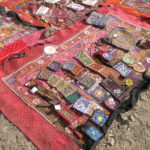
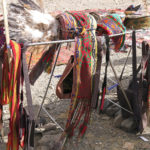
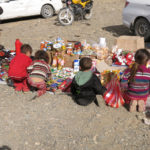
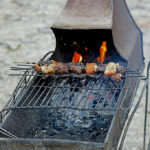
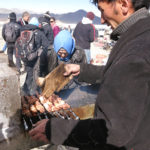
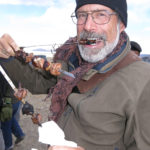
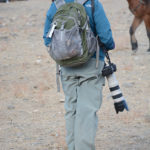
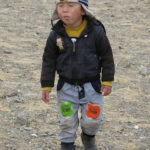
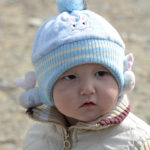
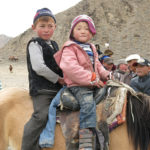
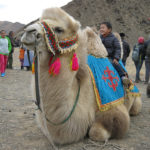
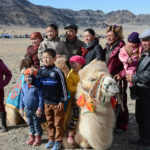
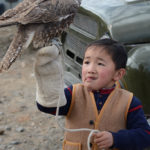
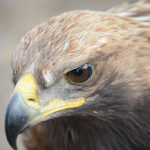
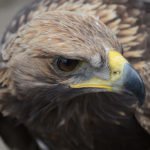
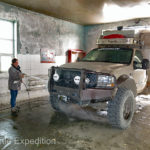






Wow, thanks for the awesome report.
God Bless
Great series of blogs on Mongolia…really enjoying your images and commentary. I’m not sure we’ll make it there with our rig, but it looks like a real adventure!
Thanks for the pictures. These are some of your best.
When filming The Jewel of the Nile in Morocco, the camel (a Dromedary, or one-hump) ridden by Danny DeVito’s stunt double decided it didn’t like running along side a train, so made a sharp left turn and took off at a gallop across the desert. We didn’t see them again for an hour . . . camels can run very fast when inspired, and can out-run a horse for short periods of time.